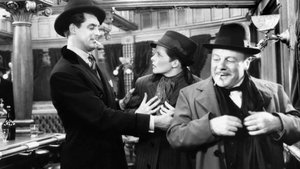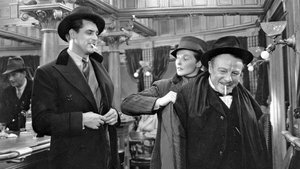Contact: [email protected]
Video Sources 0 Views
- Watch trailer
- Sylvia Scarlett


Synopsis
Table of Contents
ToggleReview: Sylvia Scarlett (1935) – A Classic Romantic Adventure Unveiled in Brilliant Color

Introduction
“Sylvia Scarlett” (1935) stands as a testament to the timeless appeal of romantic adventure and the transformative power of self-discovery. In this review, we’ll explore the significance of this early colored film, delving into its impact on audiences and its enduring legacy in the realm of romantic cinema.
Check The Full Colorized Movies List
Check Our Colorized Movies Trailer Channel
Understanding Sylvia Scarlett 1935: Director, Cast, and Genre
Directed by the visionary George Cukor, “Sylvia Scarlett” (1935) showcases his flair for blending romance, comedy, and adventure into a captivating cinematic experience. The film boasts a talented cast, including Katharine Hepburn and Cary Grant, whose on-screen chemistry ignites the screen with passion and wit. Set against the backdrop of Europe’s scenic landscapes, “Sylvia Scarlett” (1935) transports viewers on a whirlwind journey of self-discovery and forbidden love.
Exploring the World of Sylvia Scarlett 1935: Plot and Characters
At its core, “Sylvia Scarlett” (1935) follows the exploits of a young woman, played by Katharine Hepburn, who disguises herself as a boy to escape the authorities and embark on a daring adventure across Europe. Along the way, she encounters a charming rogue, portrayed by Cary Grant, whose roguish charm and devil-may-care attitude captivate her heart. As their journey unfolds, they find themselves drawn into a world of danger, deception, and desire, where the line between truth and fiction becomes increasingly blurred.
The Art of Film Colorization
Film colorization serves as a transformative tool that enhances the visual experience of classic movies, breathing new life into timeless stories and captivating audiences with vibrant hues. By digitally adding color to black and white films, colorization allows viewers to immerse themselves in the rich tapestry of cinematic worlds, exploring every nuance and detail with fresh eyes and renewed appreciation.
Early Colored Films: A Brief History
The history of colored films traces its roots back to the early days of cinema, with filmmakers experimenting with various techniques to add color to their creations. From hand-tinted frames to early Technicolor processes, the evolution of colored film has been marked by innovation and ingenuity, paving the way for the development of modern colorization techniques that continue to captivate audiences to this day.
Sylvia Scarlett 1935 and Its Early Colored Version
The decision to release “Sylvia Scarlett” (1935) in a colorized format was met with both excitement and trepidation. While some welcomed the opportunity to experience the film in vibrant color, others expressed concerns about the potential impact on its visual aesthetic. Nevertheless, the early colored version of “Sylvia Scarlett” (1935) offers viewers a fresh perspective on the timeless tale of love and self-discovery, enhancing its emotional resonance and captivating audiences with its luminous beauty.
The Debate Over Film Colorization
The debate over film colorization continues to divide audiences and critics alike, with proponents praising its ability to breathe new life into classic movies and introduce them to a new generation of viewers, while detractors argue that it compromises the artistic integrity of the original work and diminishes its historical significance. As the debate rages on, filmmakers and audiences alike are left to ponder the merits and drawbacks of colorization in the ever-evolving landscape of cinema.
Examining Sylvia Scarlett 1935 as an Early Colored Film
As with any colorized classic, the impact of colorization on “Sylvia Scarlett” (1935) is a matter of personal interpretation. Some may argue that it enhances the film’s visual appeal and immerses viewers in its world, while others may feel that it detracts from the stark beauty of the original black and white version. Regardless of one’s stance on the issue, there’s no denying the enduring power of “Sylvia Scarlett” (1935) as a timeless romantic adventure that continues to capture the hearts of audiences around the world.
Influence and Legacy: Sylvia Scarlett 1935’s Impact on Cinema
“Sylvia Scarlett” (1935) has left an indelible mark on the world of cinema, inspiring countless filmmakers and captivating audiences with its timeless tale of love and self-discovery. From its unforgettable performances to its sweeping cinematography, the film continues to resonate with viewers of all ages, reaffirming its status as a beloved classic of the romantic adventure genre.
Director’s Cinematic Legacy: Beyond Sylvia Scarlett 1935
George Cukor’s influence extends far beyond “Sylvia Scarlett” (1935), with a diverse body of work that continues to captivate audiences around the globe. From “My Fair Lady” to “The Philadelphia Story,” Cukor’s films are celebrated for their wit, charm, and sophistication, solidifying his legacy as one of the preeminent directors of Hollywood’s Golden Age. Through his groundbreaking work, Cukor has left an indelible imprint on the world of cinema, inspiring generations of filmmakers to follow in his footsteps.
Themes Explored in Sylvia Scarlett 1935
“Sylvia Scarlett” (1935) explores a myriad of themes, from the transformative power of love to the quest for self-discovery and acceptance. Through its richly drawn characters and poignant storytelling, the film invites viewers to ponder the complexities of identity and the courage it takes to embrace one’s true self. As audiences immerse themselves in the world of “Sylvia Scarlett” (1935), they are reminded of the universal truths that bind us together and the enduring power of love to overcome even the greatest of obstacles.
Reception and Controversy Surrounding Sylvia Scarlett 1935
Upon its release, “Sylvia Scarlett” (1935) received widespread critical acclaim, with many praising its innovative storytelling, heartfelt performances, and stunning visual aesthetics. However, the decision to release the film in a colorized format sparked debate among purists, reigniting the age-old discussion surrounding film preservation and artistic integrity. Despite the controversy, “Sylvia Scarlett” (1935) remains a beloved classic that continues to resonate with audiences of all ages, reaffirming its status as a timeless masterpiece of the romantic adventure genre.
Where to Watch Sylvia Scarlett 1935 Online
For those eager to experience the timeless magic of “Sylvia Scarlett” (1935), the film is readily available on popular streaming platforms such as Netflix, Amazon Prime, and Hulu. Whether you choose to watch it in its original black and white format or the early colored version, “Sylvia Scarlett” (1935) promises to transport you to a world of romance and adventure, where love knows no bounds and the spirit of adventure beckons at every turn.
FAQs About Sylvia Scarlett 1935
Q: Is “Sylvia Scarlett” (1935) based on a true story? A: No, “Sylvia Scarlett” (1935) is a fictional tale crafted by screenwriter Gladys Unger, who drew inspiration from her own experiences and observations of human nature.
Q: Who are the main actors in “Sylvia Scarlett” (1935)? A: “Sylvia Scarlett” (1935) features an ensemble cast led by the incomparable Katharine Hepburn and Cary Grant, whose on-screen chemistry lights up the screen with passion and wit.
Q: What awards did “Sylvia Scarlett” (1935) win? A: While “Sylvia Scarlett” (1935) did not win any major awards, it received critical acclaim for its innovative storytelling and stunning visual aesthetics.
Q: Why was “Sylvia Scarlett” (1935) released in a colorized format? A: The decision to release “Sylvia Scarlett” (1935) in color was made to introduce the film to a new generation of viewers and enhance its visual appeal for modern audiences. While the choice to colorize the film sparked debate among purists, it ultimately allowed “Sylvia Scarlett” (1935) to reach a wider audience and ensure its continued relevance in the annals of cinematic history.
Conclusion
“Sylvia Scarlett” (1935) invites audiences on a thrilling adventure of love and self-discovery, where the journey to finding oneself is as unpredictable as it is transformative. As we celebrate its enduring legacy, let us embrace the timeless message of courage, acceptance, and the enduring power of love to conquer all obstacles. Whether viewed in its original black and white format or the early colored version, “Sylvia Scarlett” (1935) continues to enchant audiences with its captivating story and unforgettable characters, reminding us of the boundless possibilities that await those who dare to follow their hearts.















